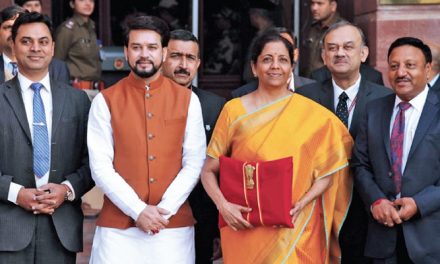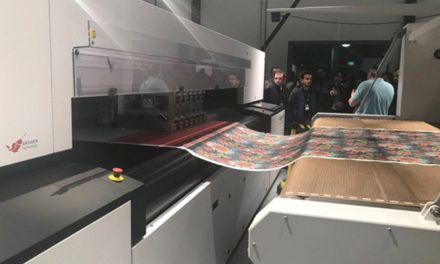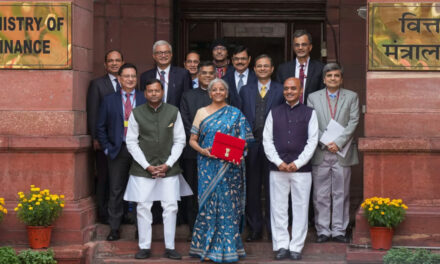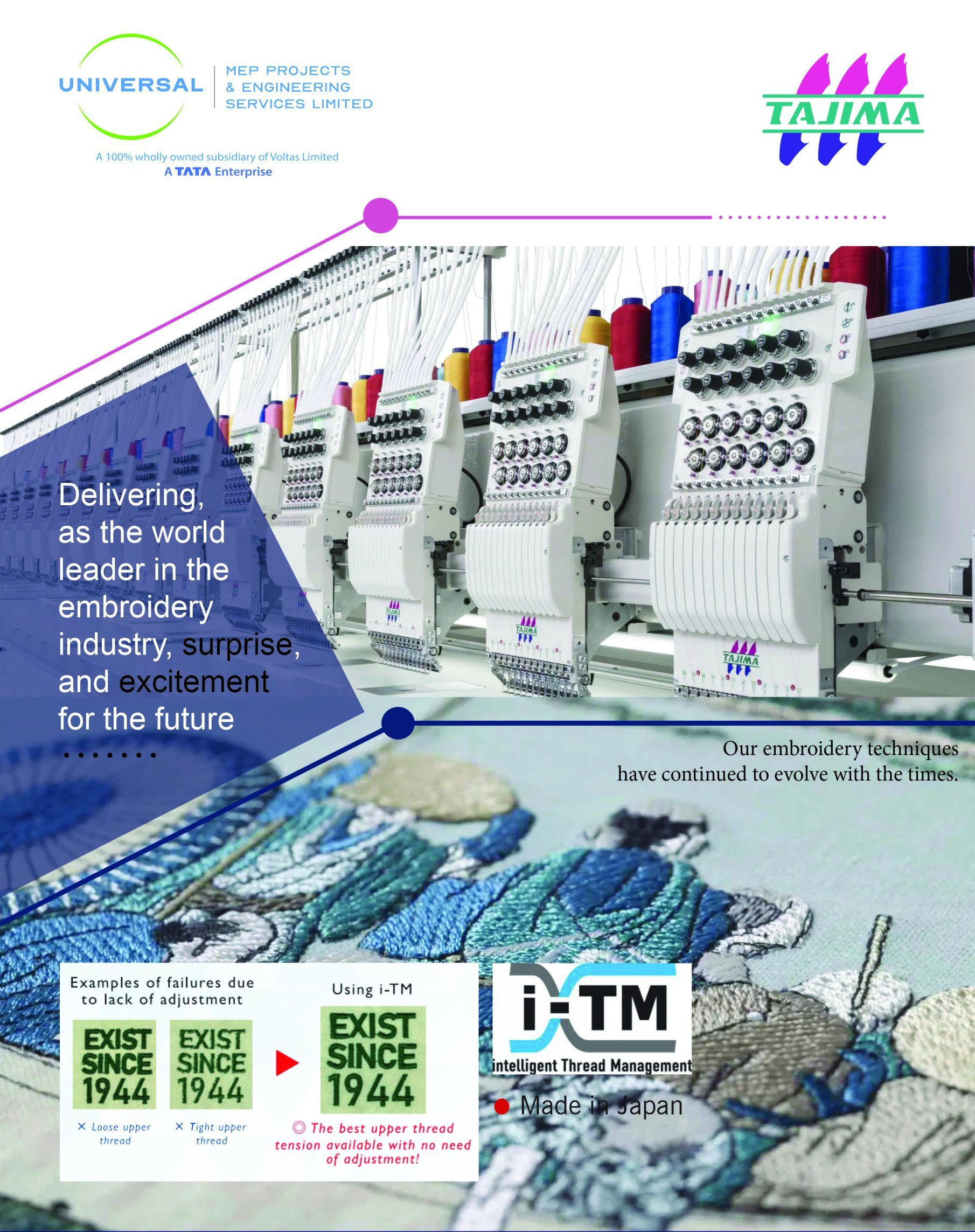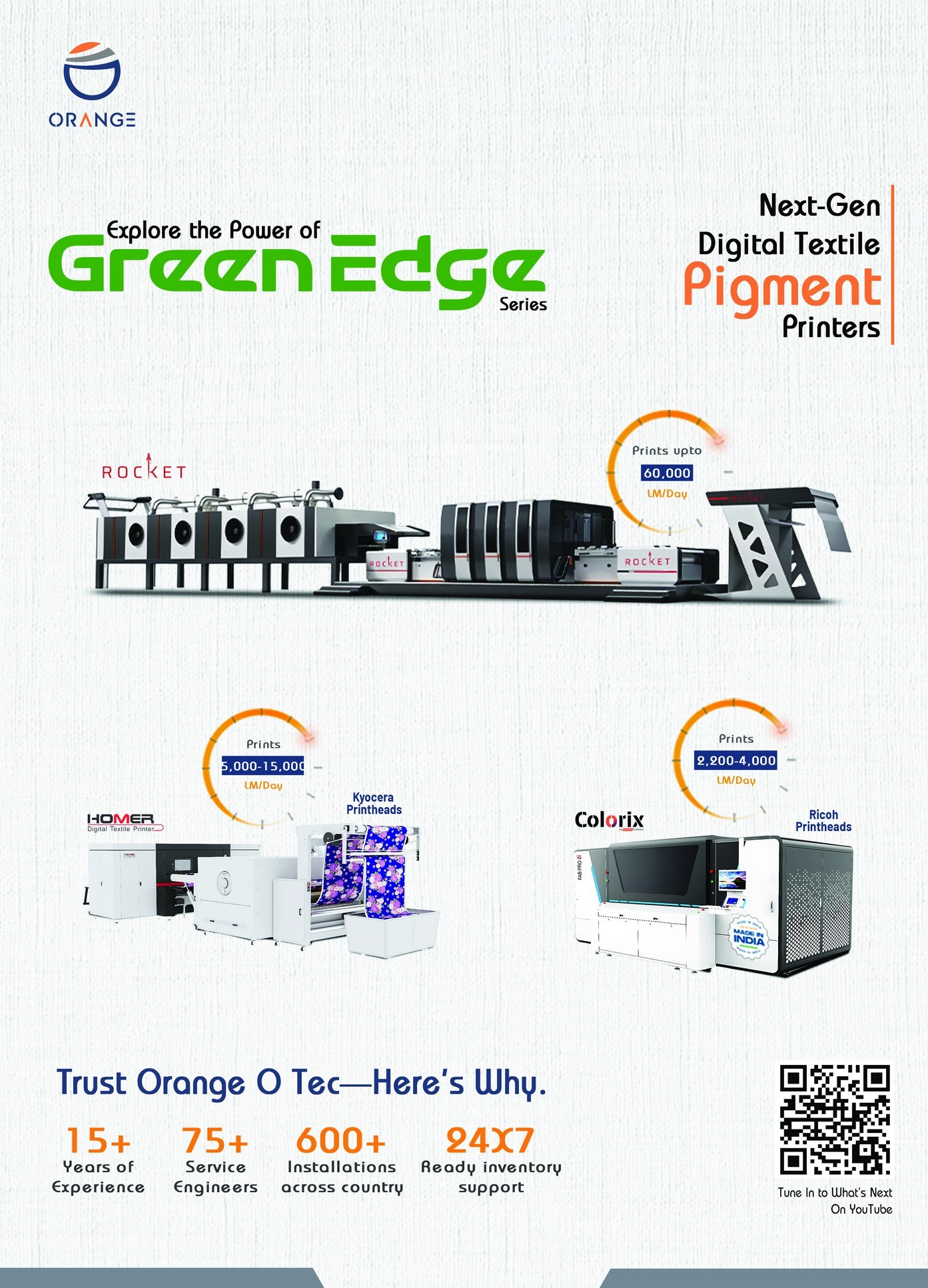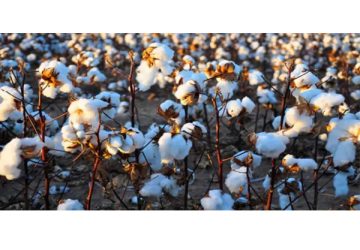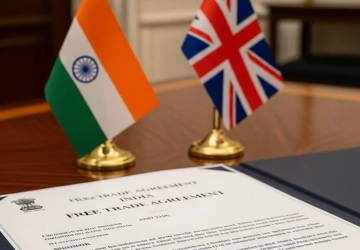
The Centre has exempted import duty on cotton from August 19 to September 30, fulfilling the demand of industry groups who said exemptions would help make the sector more competitive. The temporary suspension of the duty, announced in a government order recently, is seen as a relief for the garment industry, which is reeling from a steep 50% tariff on shipments to the United States.

Rakesh Mehra, Chairman, CITI
The Confederation of Indian Textile Industry (CITI) feels the removal of import duty on cotton will greatly benefit the Indian textile sector in its journey to become more efficient and competitive vis-à-vis its international peers.
“The removal of the import duty on cotton, though only for a brief period, signals the government’s strong commitment to help India’s textile sector become stronger and more globally competitive,” CITI Chairman, Rakesh Mehra said. The removal of import duty on cotton has been a long-pending request of the Confederation of Indian Textile Industry. “CITI would like to thank the Hon’ble Prime Minister, all other concerned authorities and different Ministries, especially the Finance, Textile, Agriculture and Commerce Ministries, for appreciating the concerns of the Indian textile sector and providing us the necessary support through this very progressive measure,” Mehra added.
India’s textile sector is dominated by cotton. The cotton value chain provides direct employment to nearly 35 million people and contributes around 80% to India’s total textile exports. India aims to more than double textile and apparel exports to $100 billion by 2030. Through a notification issued on August 18, the Central Board of Indirect Taxes and Customs (CBIC) has removed the customs duty and agriculture infrastructure and development cess (AIDC) levied on import of all varieties of cotton (HSN 5201) with effect from August 19 till September 30, 2025.
This exemption also covers cotton in transit, as the taxable event for determining the rate of duty is the date of filing of the Bill of Entry, after the goods have entered the Indian port. In cases where the Bill of Entry has been filed in advance (as permitted by Customs for faster clearance prior to the arrival of goods), the same can be withdrawn and re-filed afresh at the earliest, that is, before the Out-of-Charge Order is issued for the imported cotton.
For the benefit of lakhs of cotton growing farmers, India’s FY26 Budget had announced a ‘Mission for Cotton Productivity’. “This 5-year mission will facilitate significant improvements in productivity and sustainability of cotton farming, and promote extra-long staple cotton varieties. The best of science & technology support will be provided to farmers. Aligned with our integrated 5F vision for the textile sector, this will help in increasing incomes of the farmers, and ensure a steady supply of quality cotton for rejuvenating India’s traditional textile sector,” Union Finance Minister Nirmala Sitharaman had said in her Budget speech.

Rahul Mehta, Chief Mentor, CMAI
According to a report, we understand that the objective of the GST reforms is to reduce the number of slabs, thereby bringing ease in operating GST and making products for mass consumption cheaper by placing them in the lower slab. CMAI lauds both of these objectives as they are very good for the apparel industry.
The question lies in the execution and implementation of these reforms. For example, garments priced up to Rs. 1000 fall under the 5% slab, and those priced above Rs. 1000 fall under the 12% slab. If the 12% GST slab is eliminated, it means that a certain portion of apparel would move into the 18% slab, which would be disastrous. The only way the proposed GST reforms will be beneficial for the apparel industry is if the entire textile value chain is shifted under the 5% slab, which the apparel industry has been asking for since the day GST was introduced. This will make clothes cheaper and also eliminate the problem of the inverted duty structure. Therefore, I strongly recommend and urge the government to shift the entire textile value chain under the 5% slab.
What also needs to be considered when talking about ‘ease of doing business’ is ensuring that even the raw materials for all textile products are brought under the 5% GST slab. Otherwise, what happens is that there will be chemicals, certain inputs, and certain raw materials that fall under 18%, while the finished goods remain under 5%. That would worsen the inverted duty structure problem. So, the government must ensure that they do not repeat that mistake.
Another point of caution is the possible strategy of increasing the Rs. 1000 limit to a higher threshold, placing garments above that limit under the 18% slab. That would again be disastrous for the apparel industry, as it would encourage manufacturers to lower the quality of their products and reduce prices just to fall under the lower tax slab. The difference between the two slabs, which at the moment is 5% and 12%, would become 5% and 18%. This would encourage under-invoicing, unhealthy practices, and the grey market, as manufacturers might prefer to shift there rather than pay such a high rate of GST.
All in all, I would say these are very commendable objectives, and the reforms are very necessary and long overdue, but the government should not go wrong in the implementation of these reforms.

Dr. S.K.Sundararaman, Chairman, SIMA
The predominantly cotton based Indian textile industry has been facing several challenges during the past few years, one of the major concerns being the 11% import duty levied on cotton. The cotton value chain, which provides direct employment to nearly 35 million people and contributes around 80% of the country’s total textile exports, has been significantly impacted by this levy. With effect from 2nd February 2021, the government imposed a 5% Basic Customs Duty (BCD), 5% Agriculture Infrastructure Development Cess (AIDC), and a 10% Social Welfare Surcharge on both, cumulatively resulting in an 11% import duty on cotton.
To address the raw material (cotton) shortage, the government exempted all varieties of cotton from import duty from 14th April 2022 to 30th September 2022, later extending the exemption until 31st October 2022. This timely relief greatly supported the industry in capitalizing on the pent-up demand in the post-COVID period, enabling it to achieve a business size of USD 172 billion, including USD 45 billion in exports.
The country was producing 350 lakh bales of cotton as against the requirement of 335 lakh bales, when the government levied import duty to protect the interests of farmers. However, since domestic production of Extra-Long Staple (ELS) cotton stood at 5 lakh bales compared to the annual requirement of 20 lakh bales, the government exempted ELS cotton from import duty with effect from 20th February 2024, following representations submitted by the industry to the Ministry. This decision was taken at a time when the overall domestic cotton production had fallen to 294 lakh bales, the lowest in the last 15 years, as against a requirement of 318 lakh bales (including non-mill use).
Against this background, the industry has been urging the government to remove the import duty ideally, or at least during the off-season, to create a win-win situation for both farmers and the industry. Specifically, the industry requested duty-free import of all varieties of cotton from 1st April to 30th September.
Dr S.K.Sundararaman, Chairman, SIMA has profusely thanked the Hon’ble Prime Minister Shri Narendra Modiji, Hon’ble Union Finance Minister Nirmala Sitharaman, Hon’ble Union Minister of Agriculture and Farmers Welfare Shivraj Singh Chouhan, Hon’ble Union Minister of Commerce and Industry Piyush Goyal and Hon’ble Union Minister of Textiles Giriraj Singh for favourably considering the long pending demand of the industry and exempting all varieties of cotton from 11% import duty with effect from 19th August 2025. He has said that exempting cotton from the import duty during off-season is vital to create a win-win strategy both for the cotton farmers and the industry to have a level playing field and gain global competitiveness.
Dr. S K Sundararaman has while thanking the Government for the landmark achievement of UK FTA, highlighted that the cotton duty exemption will throw opportunities to increase the UK exports and also the exports to other countries considerably. Dr. S K Sundararaman, has said that though the direct exporters could take advantage of Advance Authorization Scheme and import duty free cotton, the predominantly MSME & fragmented nature of the industry would need imported cotton to cater to the nominated business and also meet the long-term contracts both in the domestic and export markets.
SIMA Chief has stated that the duty exemption during off-season till 2030 is essential as the Mission for Cotton Productivity with the budget outlay of Rs 5,900 Crores would take 5-7 years to reach self-sufficiency in the cotton requirement and also to meet the vision of increasing the Indian textile exports from USD 37 Billion to USD 100 Billion by 2030.

